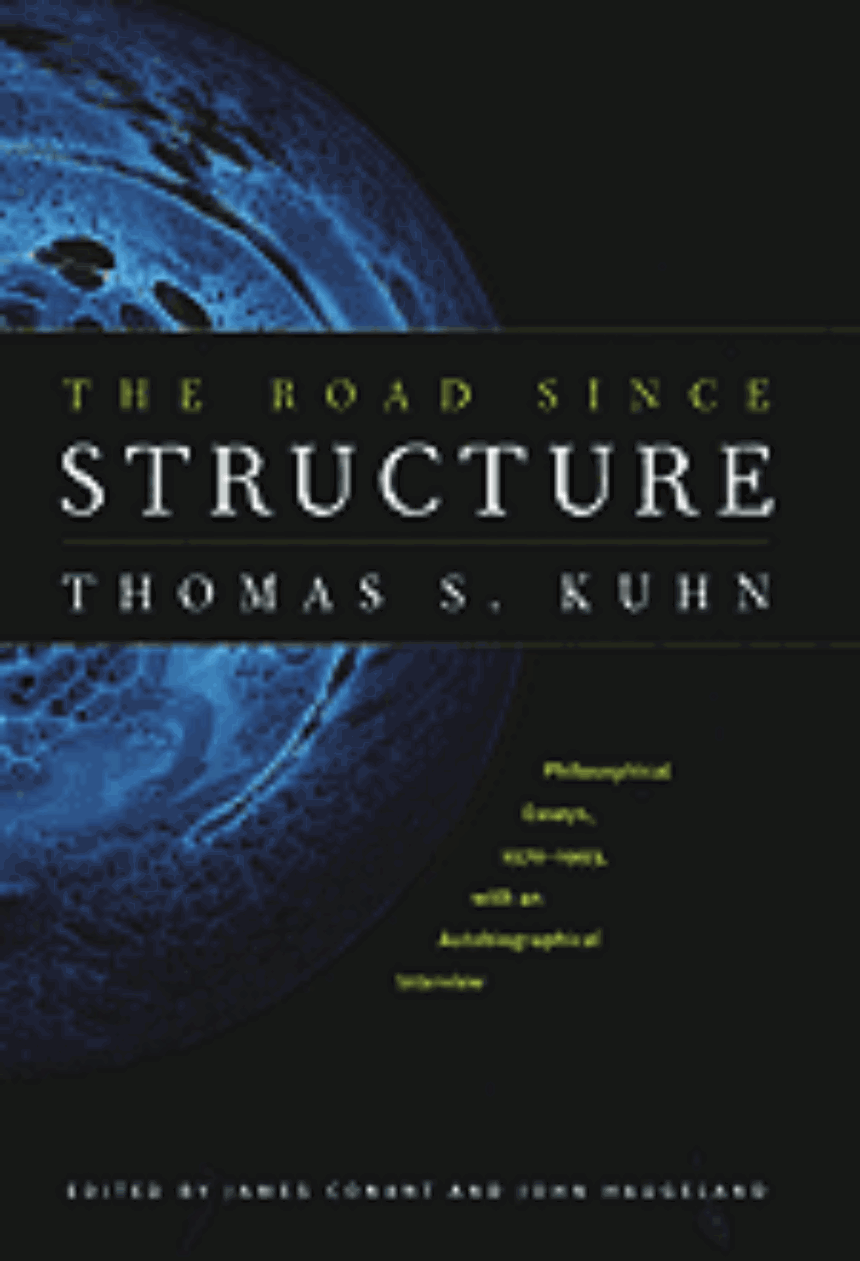The Road since Structure
Philosophical Essays, 1970-1993, with an Autobiographical Interview
9780226457994
The Road since Structure
Philosophical Essays, 1970-1993, with an Autobiographical Interview
Thomas Kuhn will undoubtedly be remembered primarily for The Structure of Scientific Revolutions, a book that introduced one of the most influential conceptions of scientific progress to emerge during the twentieth century. The Road Since Structure, assembled with Kuhn’s input before his death in 1996, follows the development of his thought through the later years of his life: collected here are several essays extending and rethinking the perspectives of Structure as well as an extensive, fascinating autobiographical interview in which Kuhn discusses the course of his life and philosophy.
Reviews
Table of Contents
Foreword Jehane R. Kuhn
Editors’ Introduction
PART 1: RECONCEIVING SCIENTIFIC REVOLUTIONS
1. What Are Scientific Revolutions?
2. Commensurability, Comparability, Communicability
3. Possible Worlds in History of Science
4. The Road since Structure
5. The Trouble with the Historical Philosophy of Science
PART 2: COMMENTS AND REPLIES
6. Reflections on My Critics
7. Theory Change as Structure Change: Comments on the Sneed Formalism
8. Metaphor in Science
9. Rationality and Theory Choice
10. The Natural and Human Sciences
11. Afterwords
PART 3: A DISCUSSION WITH THOMAS S. KUHN
Publications of Thomas S. Kuhn
Editors’ Introduction
PART 1: RECONCEIVING SCIENTIFIC REVOLUTIONS
1. What Are Scientific Revolutions?
2. Commensurability, Comparability, Communicability
3. Possible Worlds in History of Science
4. The Road since Structure
5. The Trouble with the Historical Philosophy of Science
PART 2: COMMENTS AND REPLIES
6. Reflections on My Critics
7. Theory Change as Structure Change: Comments on the Sneed Formalism
8. Metaphor in Science
9. Rationality and Theory Choice
10. The Natural and Human Sciences
11. Afterwords
PART 3: A DISCUSSION WITH THOMAS S. KUHN
Publications of Thomas S. Kuhn
